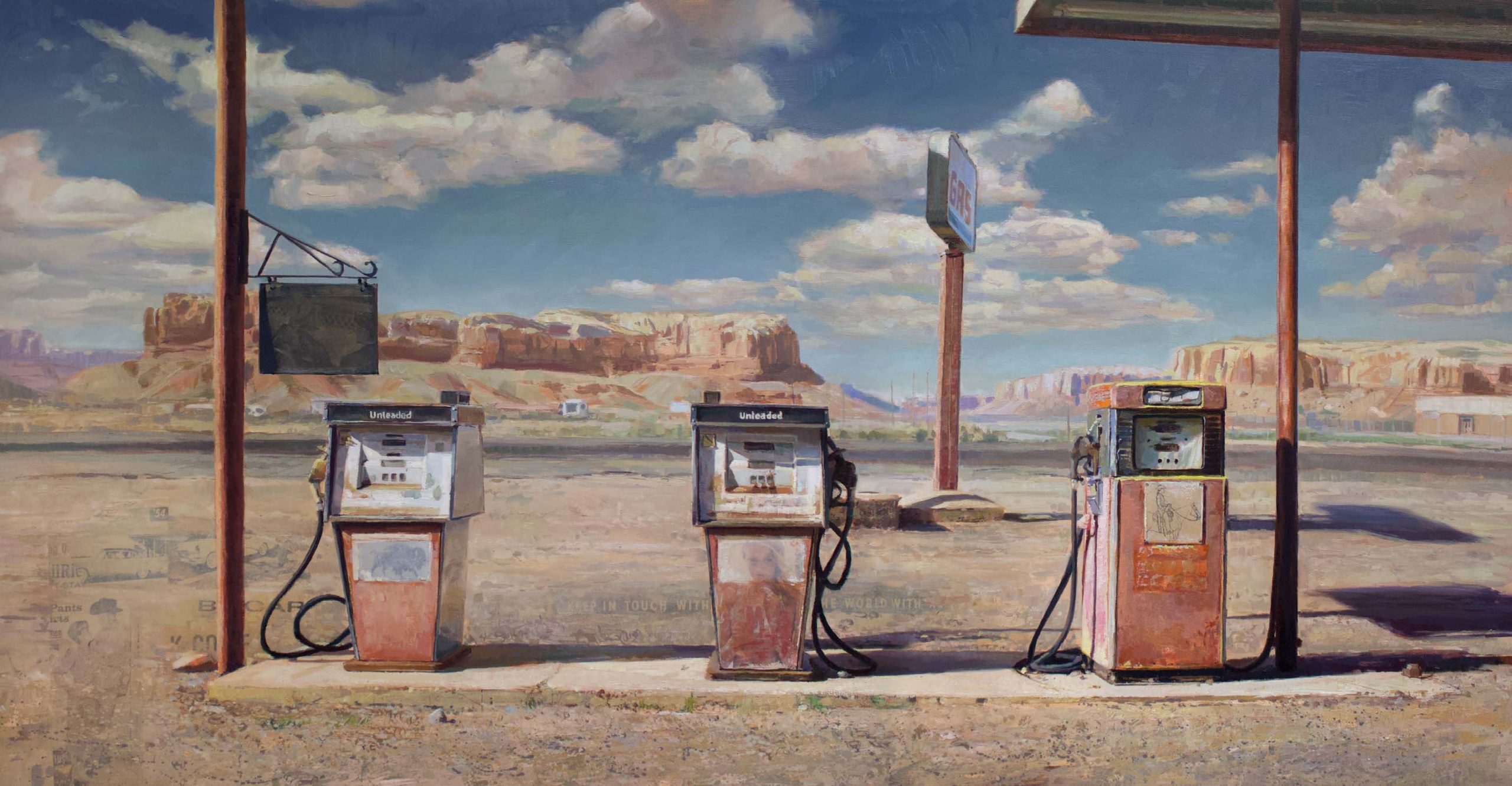
03 Jan WESTERN NOSTALGIA
“Time is a constant in all of our lives,” says artist Jason Kowalski. His evocative paintings of weathered, often abandoned restaurants, motels, vehicles, and other artifacts of the West comprise, he says, “an archival portrait of the American story.” Rife with rust, dust, fading paint, and splintered wood, his depictions of the undone and the abandoned celebrate the curious beauty of dilapidation. “I believe that beauty lies in transformation,” Kowalski says. “Like nature as it transforms seasonally … the stunning palettes of color and texture on a place change over time. Seeing storied structures changed by time also reminds me to live in the moment, that today is precious.”
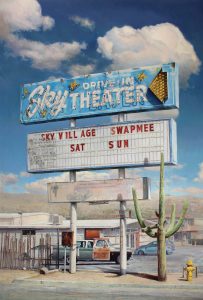
Sky Drive In | Oil on Canvas | 72 x 48 inches | 2020
Along with the present moment, Kowalski’s work expresses his reverence for “the humanity found in the craftsmanship of old.” Contemporary automation and artificial intelligence remove, he feels, the human element within the made world. “From the automobile to architecture, the bygone era was an era of things made by hand, sweat, and human ingenuity. Like a simple doorknob … such a utilitarian thing, but it was made with such aesthetic beauty generations ago.” Studying and pondering these objects and structures from the past ignites Kowalski’s passion and creativity. “I find joy,” he says, “in looking.”
Kowalski, who earned his bachelor’s of fine arts from Laguna College of Art and Design in Southern California and currently resides in Colorado, finds particular joy in looking at the American West. Though he was born in the Midwest, he is “most excited about the Western landscape. I suppose I do idolize the West like [one does] a childhood Western hero. In addition to the rich history of the West, its colors are mesmerizing. I love the way a warm Western sunset illuminates a vast lonesome landscape — even the cool blues found in a shadow dance across a visual frame.”
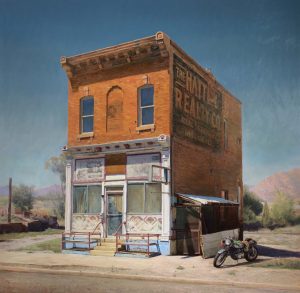
Main Street Mercantile | Oil on Canvas | 44 x 44 inches | 2023
Kowalski’s resonant use of color is a pleasing consequence of his distinctive palette, which is both consistent and constrained, but not at the expense of his creativity. “A limited color palette can produce so many wonderful, nuanced colors. I really enjoy the process of mixing paint,” he says. Harmonious and atmospheric, Kowalski’s colors capture real-life hues and communicate feelings; they also lend life to the dynamic abundance of textures in his paintings. Whether it’s the spines of a saguaro cactus, the asphalt of a well-traveled highway and the patches of rust on a turquoise truck, the wood slats on the side of a train car, or the tiny, no-longer-illuminated glass bulbs on a sign for a roadside lounge, each of Kowalski’s works contains a highly tactile world. “I’ve trained my eye to see each unique texture as a color story,” he says. “When I’m painting, I really try to understand the surface of the subject. Oftentimes that means lots of layers of carefully mixed color values. I also aim to manipulate the brushstroke to be sensitive to the subject’s texture.”
“Jason’s connection to the subject matter is important,” says Josh Willott, owner and director of J. Willott Gallery in Palm Desert, California. “He doesn’t paint anything he hasn’t stood in front of. It’s [his] documentation of fading Americana that makes him so special,” he adds — not only in the eyes of gallerists but also collectors. “His collectors harken back to memories,” Willott says, “of staying in the places he paints, of the cross-country road trip in the back of the family station wagon.”
Kowalski hopes that those who see his work “experience a personal connection with the subject matter. I hope that they are transported into a treasured memory.”
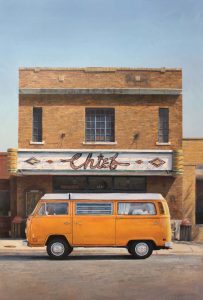
Chief | Oil on Canvas | 54 x 36 inches | 2020
Kowalski spent hours of his own childhood in his grandparent’s small print shop, which informed his paintings in a unique way by partly inspiring his choice to incorporate subtle bits of ephemera. These mixed-media clippings haunt his work; they intrigue and delight those who notice them. “As a young child [in the print shop], I would watch in wonder as large machines printed graphics on paper.” This, he explains, catalyzed his sensitivity to font and imagery. “We also drove a lot, and on our travels, I found that dilapidated billboards and signage captivated me. Specifically, I was fascinated with the way advertisements layered up over time. This layering of imagery inspired my creative process today. The ephemera in my work is concealed into the painting so as not to distract the viewer from the subject matter; rather, it plays a supporting role to the narrative.”
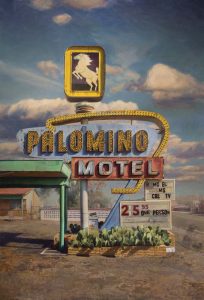
Palomino | Oil on Canvas | 72 x 48 inches | 2024
“Jason gives the viewer an element of surprise and discovery with the vintage ephemeral collage embedded in the paintings,” says Sue Greenwood, owner and director of Sue Greenwood Fine Art in Laguna Beach, California. “His imaginative choices in creating the collages add another level to the narrative of the iconic landmarks he chooses to paint. It gives the landmarks a more in-depth context and becomes more about storytelling than documenting.”
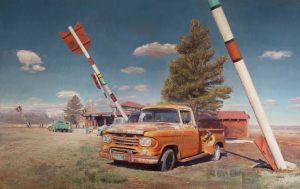
Roadside Attraction | Oil on Canvas | 38 x 60 inches | 2024
Alongside the ephemera, clouds play similarly supporting roles in Kowalski’s work, and it’s captivating to see their delicate, vaporous, fleeting forms alongside the metal, wood, glass, and cement of the other structures that capture his gaze. “The American West is known for being ‘big sky country,’” Kowalski notes, “and every cloud is unique. They can be light and atmospheric, which softens the hard lines of a brick-and-mortar structure, or they can be big, colorful, and bold, which really anchors a piece. They are fun objects to paint. Skies are very important to the landscape painter — clouds especially can be strong components of a successful composition.”
For Kowalski, composition begins with putting pencil to paper. “I like to write down places to visit or sketch a composition that I hope to paint. Sometimes I use pastels and colored pencils to draft a particular color sequence that would make for a dynamic painting.” Then, he hits the road.
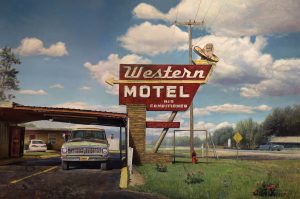
Western Motel | Oil on Canvas | 48 x 72 inches | 2023
“Traveling to photograph subject matter comes next. On location, I have a small leather sketchbook that tucks into my vintage Polaroid camera case. In the sketchbook, I make little shorthand notes about the location. I like to jot down where the sun is and how the light falls upon the subject. I also like to make quick notes about the location or town, anything that falls outside the camera lens. All this helps me when I return to the studio to begin the painting at home.”
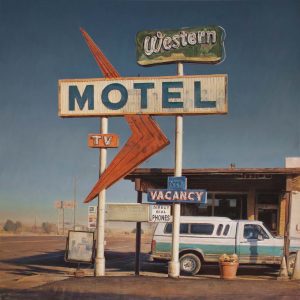
Rodeo Town | Oil on Canvas | 42 x 42 inches | 2024
“His technical skill is outstanding,” says Brandon Brown, director of sales at LewAllen Galleries in Santa Fe, New Mexico. “His use of suffused light, toned colors, and reverential perspective inspire a consciousness of time that puts the viewer between dream and memory. His work possesses that special quality that you know when you see it.”
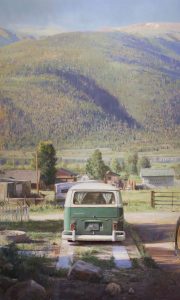
Bohemian Dreams | Oil on Canvas | 44 x 27 inches | 2024
Indeed, that know-it-when-you-see-it quality is not only apprehended with the eyes but also felt in the heart. To encounter Kowalski’s work is to see the same places, structures, scraps of ephemera, and clouds that he has seen, and to simultaneously feel them dovetail with one’s own biography.
In working, as he says, as “a landscape painter trying to capture life as seen through the human eye,” Kowalski meaningfully engages viewer’s emotions and imaginations, inspiring us to consider not only the moments that have passed, but the fleeting one that we inhabit.





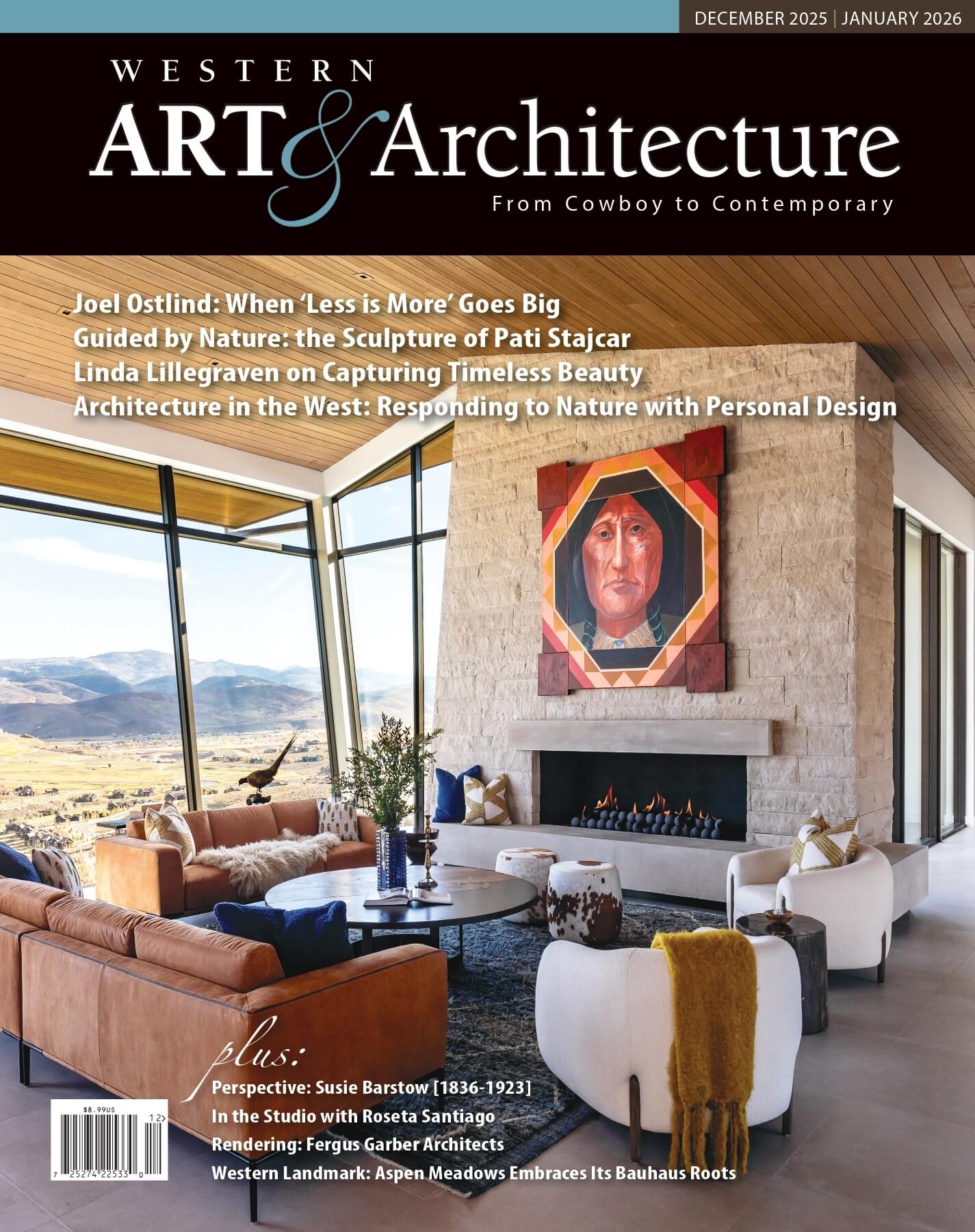
No Comments